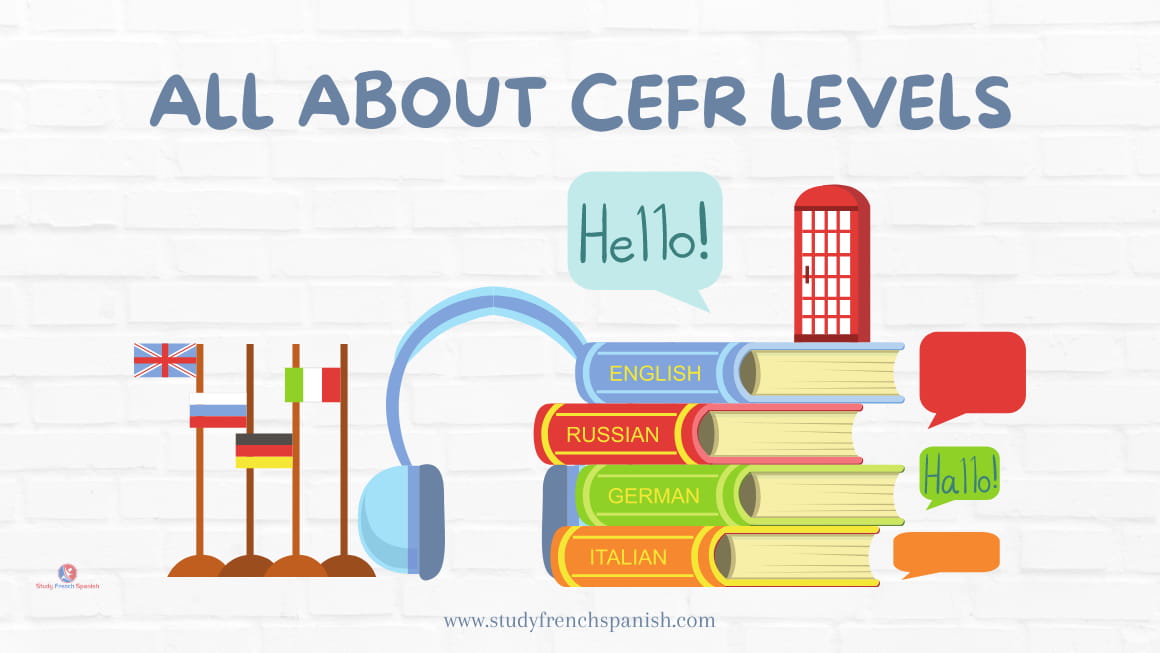Are you learning a language, especially a European one? If so, you may already know the various language tests and their levels, like DELE A1, CELI B2, or DALF C1.
Do you know that nearly all the European exams are based on CEFR levels (Common European Framework of Reference for Languages)?
What are they? What is the importance of this international system, and what languages follow the CEFRL pattern? Is there any disadvantage? Let’s find out everything in this article.
Overview of language proficiency levels
As a language learner, you may dream of reaching certain levels, such as basic, lower intermediate, advanced, or near-native.
And for that, you must take one of the well-known language exams to help you assess your language skills.
You get a score and level attached when you pass one of these official tests. For instance, Mandarin HSK level 5, Portuguese CAPLE A2, Spanish SIELE B1, Italian CILS C1, and Japanese JLPT N2, to name a few.
All these tests aim to check your language ability if you aren’t a native speaker of the language in question. And this directly relates to capability, efficiency, and performance.
This can also help determine whether they understand the language well enough to succeed and adapt well to varied settings and workplaces.
However, these tests differ in difficulty, question format, structure, and levels because they follow distinct patterns, frameworks, and guidelines.
The CEFR is the most widely used and accepted language system and model. Over a dozen famous tests adhere to it.
So, let’s jump to the next part.

What is CEFR?
CEFR, CEF, or CEFRL stands for the Common European Framework of Reference for Languages. The Council of Europe created this framework and continues to oversee and promote its use.
CEFR is an international standard for assessing language ability. It helps measure and compare language skills and understand proficiency in a specific language.
It includes a complete description of all four skills: speaking, writing, reading, and listening. It assesses candidates’ overall language abilities rather than specific ones, like reading or listening.
CEFR offers a common foundation for language syllabuses. It also covers textbooks, exams, curriculum policies, etc., worldwide.
This is the most widely used grading system for European languages worldwide.
For example, if you study French, you may want to take French tests like DELF, DALF, TEF, or TCF Canada.
All these French language exams are based on CEFR levels. Thus, it helps you choose the right level for your studies.
How to use it?
Unlike some other popular exams, CEFR-based tests measure all language skills. This includes reading, writing, speaking, and listening.
Besides language abilities, it also covers various vital aspects, such as translation, interpretation, literature, history, culture, and technical knowledge.
Suppose you need an authentic and formal certificate that proves your current language ability and helps with your academic or career. Then, you can give one of the CEFR-based tests.
Some online options are available and free, too. Still, most aren’t good enough and do not accurately picture your language skills. Also, most organizations do not acknowledge and accept their certifications.
So, it would be better to take an official test recognized by the concerned authorities, though it costs some money.
You can choose the language and its level according to your learning goal.
For example, if you aim for maximum points for Canada PR, you can take TEF Canada and seek CLB7, which means at least B2, if not C1.
Similarly, if you wish to get a job requiring German, target B2 of Goethe-Zertifikat or TestDaF.
Some exams, like TEF, TCF, or SIELE, are point-based tests. These examinations measure from A1 to C1 in all four areas.
This means you do not select a level like DELF A2 or DELE B2 while filling out the form. Instead, just take a test like TCF Quebec or SIELE Global to know your exact standing.
As a result, you may get anything like B1 in speaking, A2 in writing, or C1 in reading. But, again, this helps you know how well you know and in what way.
As a result, you focus on specific parts and get a precise score and official certificate on just 1 test.
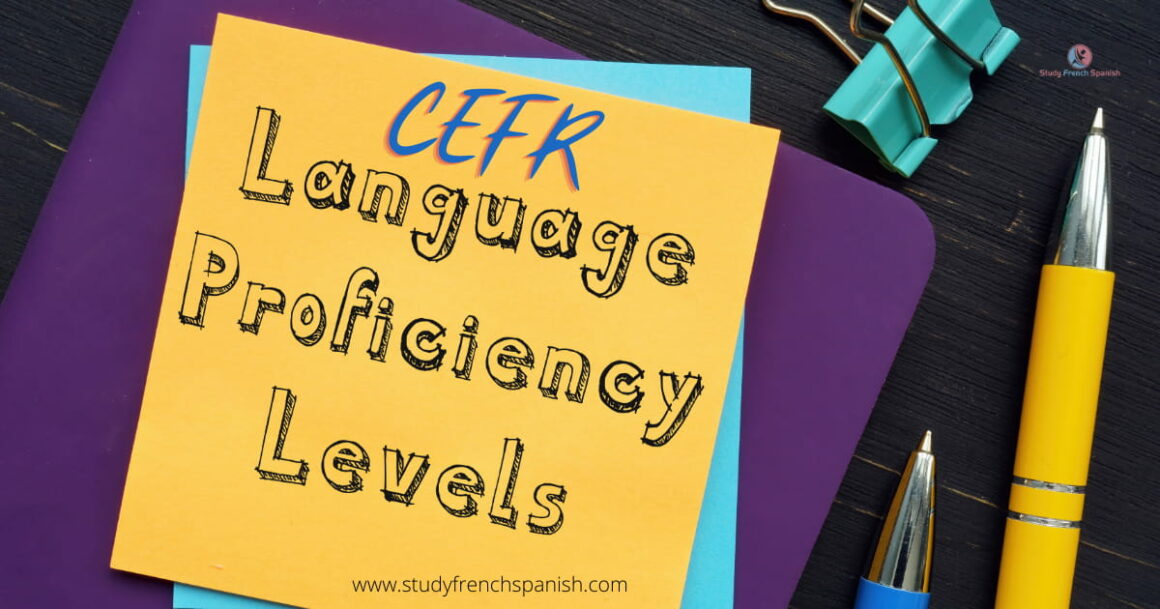
Benefits of CEFR
CEFR-based language ability tests are beneficial and offer many unique advantages.
First, the certificates and diplomas adhering to CERF levels are helpful for various academic reasons. For example, you may need to cover your school and college curriculum or pursue higher studies abroad.
This also helps teachers and educational institutions. They ensure that their teaching content is appropriate for the student’s level.
CEFR levels are also comparable, regardless of the languages they follow. For example, a student who learned Italian in Spain and achieved B1 has the same language skills as a student who learned Portuguese in Germany at the same level.
CEFR certification never expires. As a result, it adds lifelong value to your CV.
The CEFR credential is highly valuable if you dream of making a language career or need linguistic skills for such jobs. Also, employers often use CEFR to check your language knowledge and ability to perform language-related duties.
If you have been learning a language for a while, you would surely want to know your current level and where you stand. Plus, you may desire to achieve a higher level for various reasons.
The CEFR helps people understand their own language capabilities.
Besides your strengths, it also helps you identify your weaknesses. This encourages you to focus on flaws and prepare well to move ahead.
This is an excellent motivator for learners. You can feel a sense of achievement as you climb the language ladder from A1 to C2.
CEFR covers vital communication and practical language skills. It also focuses on the cultural aspects of the concerned languages and countries.
Disadvantages of CEFR
Despite some known benefits, there are some disadvantages, too.
First, not all language proficiency tests are created equal. Many kinds of leveling systems are in use worldwide.
Based on CEFR-like approaches, the language tests cover all 4 language skills: reading, writing, speaking, and listening.
Some tests, such as TOPIK, HSK, or JLPT, don’t cover the speaking component in their standard test. Plus, the difficulty level also varies vis-à-vis CEFR.
To sum up, all language examinations are different and not comparable.
Second, CEFR levels are helpful only in academic and professional fields and not beyond that.
Most learners pick a language for traveling and cultural aspects. Some do so for personal reasons, like hobbies, interests, or interacting with loved ones who speak that language.
You do not need to study all 4 CEFR parts for these goals, i.e., reading, speaking, listening, and writing. Instead, you may only need the speaking section.
Also, CEFR covers some theoretical parts you may never need. You need to study a lot, pay a decent amount to take the test, and finally pass it to get a certificate.
In all these cases, you don’t need CEFR levels. You just need to enjoy yourself and make yourself happy by learning a language of your preference.
CEFR levels
The CEFR has three tiers: Basic, Independent, and Proficient. Each tier comprises two sublevels for a total of six levels.
The CEFR outlines what individuals can do as they advance from the lowest to the highest level. Each level describes what learners should do when reading, listening, speaking, and writing.
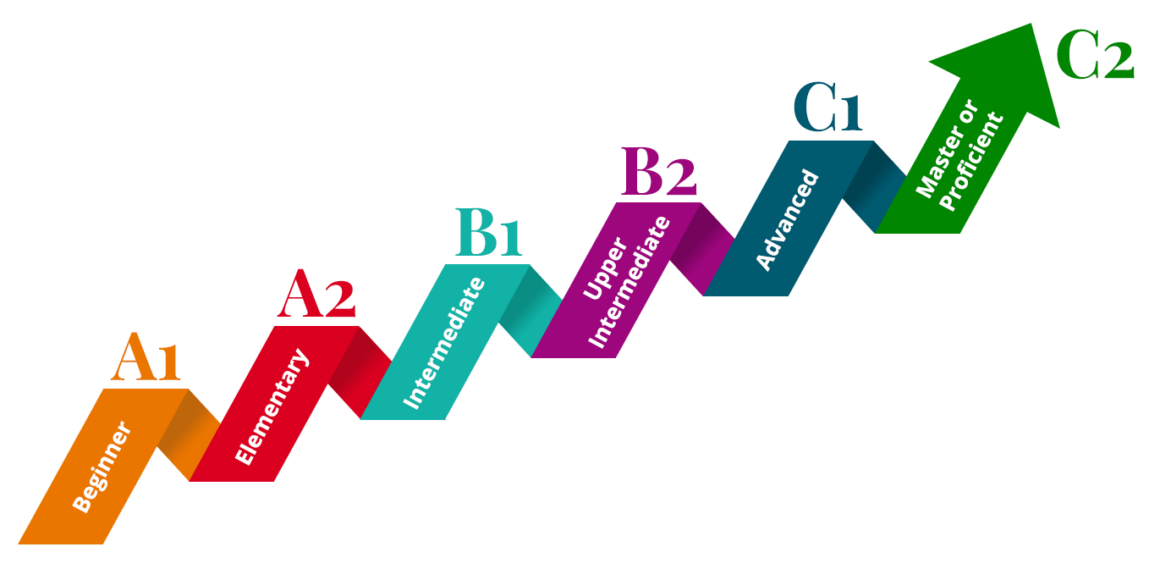
“A” Levels (Basic User)
Category A covers basic. It is further subdivided into A1 (Breakthrough) and A2 (Waystage).
A1 (Beginner)
At the A1 CEFR level, a language learner:
- The ability to understand and use elementary expressions to satisfy concrete requirements.
- You can greet and introduce yourself and other people. You can ask questions about personal details such as where you live, friends, people you know, and possessions.
- You can discuss clothing, foods, daily activities, weather conditions, medical situations, locations, hotels, purchasing products in the market, hobbies, and fun activities.
- A1 also helps interact with doctors, receptionists, and servers in a restaurant. One can also ask for directions from a stranger, discuss with colleagues, and more.
- It is possible to communicate simply as long as the person talks slowly and clearly.
A1 (Beginners) is for those unfamiliar with the target language. Some are subdivided into two parts, like pre-A1, A1.1, A1.2, etc.
A2 (Elementary)
At the A2 CEFR level, a language learner:
- Capability to understand family information, shopping, local geography, and employment. One can frequently use expressions (e.g., shopping, local geography, job).
- Interact quickly in simple, routine tasks involving simple information exchanges. It can relate to familiar or everyday topics.
- A person who can briefly describe aspects of their immediate background environment. And also issues with near-future needs.
- One can communicate and understand vacations, clothing, and business talks. One can also describe past lives, medical help, etc.
- A2 allows students to speak freely about movies, leisure activities, and weekend entertainment. You can talk about vacations, exciting stories, etc.
A2 (Elementary) is for those with previous knowledge of the language. Before, learners can understand basic speaking, reading, writing, and listening in real-life situations.
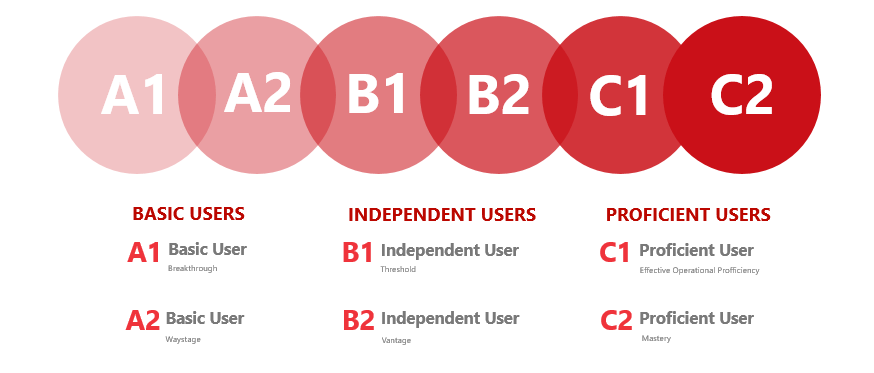
“B” Levels (Independent User)
The B level is for independent users. They are subdivided into B1 (Threshold) and B2 (Vantage).
Many educational organizations also divide broad B into sublevels, such as B1.1, B1.2, B2.1, B2.2, B2.3, etc.
B1 (Intermediate)
At the B1 CEFR level, a language learner:
- Knowing the main points of clear standard input on familiar topics encountered in everyday life, such as work, school, entertainment, etc.
- One can deal with most situations when traveling where the language is widespread.
- Can write straightforward, connected texts on familiar or personal topics.
- It describes experiences, dreams, hopes, and ambitions and briefly explains opinions and plans.
- Can take part in negotiations in your field. You can also engage in casual and formal conversations at a slow pace.
B2 (Upper Intermediate)
At the B2 CEFR level, a language learner:
- The ability to comprehend written material on technical topics within their field of specialization, including complex text on concrete and abstract topics.
- One can interact with native speakers with high fluency and spontaneity. This makes regular interactions likely with little to no difficulty for either side.
- Ability to create explicit, detailed texts on various topics and explain the pros and cons of multiple options.
- One can discuss relatively complex social, business, and political scenarios with no strain.
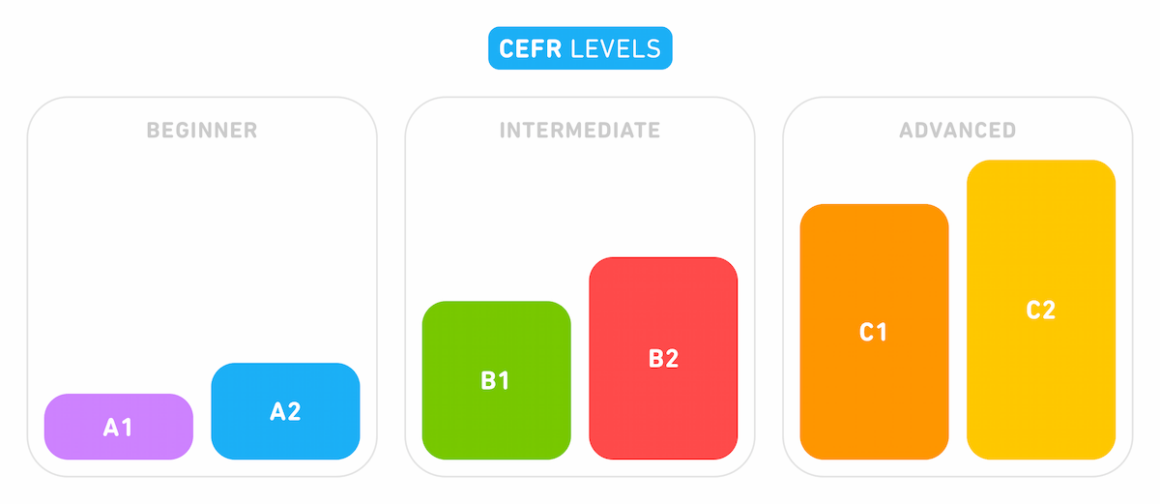
“C” Levels (Proficient User)
The “C” levels are for proficient users. There are two sublevels — C1 (Advanced) and C2 (Mastery).
C1 (Advanced)
At the C1 CEFR level, a language learner:
- Understanding a wide range of complex, lengthy clauses and implicit meanings.
- Fluently and spontaneously express ideas with little to no research into vocabulary and expressions.
- Flexible and effective use of language in social, academic, and professional contexts.
- Produces clear, well-structured, detailed texts on complex subjects. It shows the use of controlled patterns, connectors, and cohesion devices.
- You can comprehend different communication styles, including indirect, direct, informal, and formal.
C2 (Proficient)
C2 is the sixth and last level of the Common European Framework of Reference. This is like a near-native and can be called “bilingual.”
This level shows that you have mastered the target language at the highest level. It also implies that you can communicate fluently and sophistication like a highly qualified speaker.
At the C2 CEFR level, a language learner:
- One can understand practically everything one hears and reads.
- One can summarize information from different written and spoken sources. It can present arguments and accounts coherently.
- Regardless of the complicated situation, you can express yourself freely, fluently, and precisely.
- In formal and informal settings, one can speak and write about everything, including opinions, reasons, and explanations.
- The level enables one to become a near-native speaker. This helps various research topics related to the language’s region.
CEFR based tests

Dozens of language exams follow the CEFR guidelines. Here is the list.
- French — DELF, DALF, TEF, TCF
- German — Goethe-Zertifikat, TestDaF, ÖSD, ÖIF
- Spanish — DELE and SIELE
- Italian — CILS, CELI, PLIDA
- Portuguese — CAPLE and CELPE-Bras
- Russian — TORFL
- Czech — Czech Language Certificate Exam (CCE)
- Danish — Prøve i Dansk
- Dutch — CNaVT and NT2
- English — IELTS, TOEFL, TOEIC, and Cambridge Assessment English
- Galician — CELGA
- Esperanto — Esperanto KER exam
- Modern Greek — Πιστοποίηση Ελληνομάθειας
- Norvegian — Norskprøver
- Swedish — Swedex
- Irish — Teastas Eorpach na Gaeilge (TEG)
- ALTE — Multiple languages
- ECL (European Consortium for Certificate of Attainment in Modern Languages) — English, Bulgarian, Czech, Croatian, French, Italian, German, Hebrew, Hungarian, Russian, Polish, Romanian, Spanish, Serbian, and Slovak
- TELC — German, English, Spanish, Turkish, Italian, French, Russian, Portuguese, Arabic, and Polish
Courses as per CEFR
Some popular language courses of cultural centers adhere to the CEFR.
- French — L’Alliance Française
- German — Goethe-Institut
- Spanish — Insituto Cervantes
- Italian — Istituto Italiano di Cultura
- Portuguese — Instituto Camões
- English — British Council
- Russian — Russian Cultural Center
